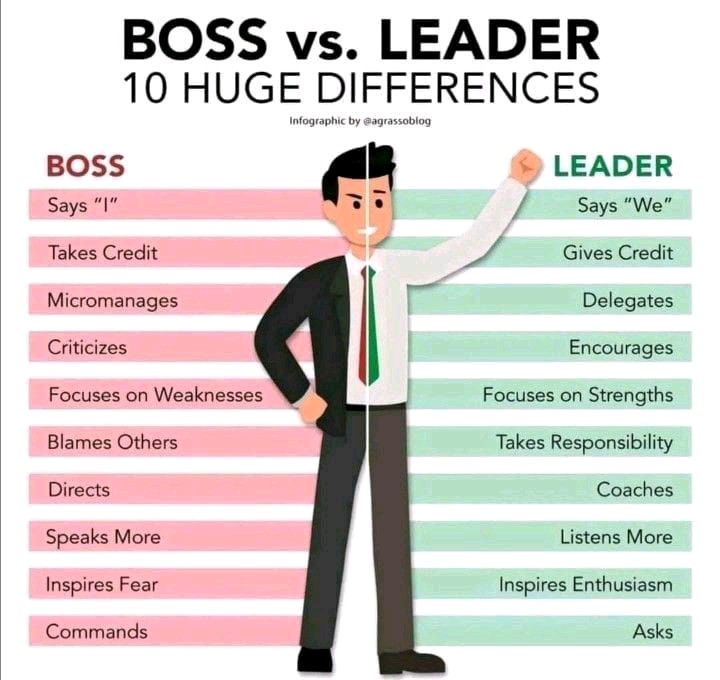In the evolving landscape of corporate culture, distinguishing between a boss and a leader is pivotal for organizations aiming to foster an environment of growth, innovation, and employee satisfaction. This article delves into the ten fundamental differences between a boss and a leader, offering insights for professionals striving to enhance their managerial approach and organizational dynamics. Understanding these distinctions is not just crucial for personal development but also for optimizing team performance and achieving strategic objectives efficiently.
1. Direction vs. Inspiration
Bosses direct; leaders inspire.
A boss often relies on the authority of their position to command action, focusing on the what and the when. In contrast, a leader motivates their team by sharing the why and the how, igniting a sense of purpose that transcends mere task completion.
2. Authority vs. Influence
Bosses wield authority; leaders build influence.
The power of a boss is rooted in their formal position, demanding compliance. Leaders, however, cultivate their influence through trust and respect, leading to a more organic and sustainable form of guidance.
3. Fear vs. Respect
Bosses instill fear; leaders earn respect.
The presence of a boss might provoke anxiety and a pressure to perform, which can stifle creativity and morale. Leaders foster an environment of respect and trust, where mistakes are seen as opportunities for growth.
4. Micro-management vs. Empowerment
Bosses micro-manage; leaders empower.
A boss might closely monitor every aspect of the work process, often leading to a lack of autonomy among team members. A leader empowers employees to take ownership of their tasks, fostering independence and confidence.
5. Individual Success vs. Team Success
Bosses focus on individual success; leaders focus on team success.
A boss might prioritize their own achievements or the outcomes of specific individuals, potentially breeding competition and resentment. Leaders celebrate collective achievements, understanding that the success of the team elevates everyone involved.
6. Communication Style
Bosses command; leaders communicate.
Communication from a boss is often one-directional, focusing on directives. Leaders prioritize two-way communication, valuing feedback and collaboration to refine ideas and processes.
7. Fixed vs. Growth Mindset
Bosses have a fixed mindset; leaders have a growth mindset.
A boss may view talent and intelligence as static, leading to a culture where challenge and effort are undervalued. Leaders embrace a growth mindset, encouraging learning, development, and resilience.
8. Responsibility for Mistakes
Bosses blame; leaders take responsibility.
When mistakes happen, a boss might look for someone to blame, creating a culture of fear. Leaders take responsibility for setbacks, using them as a springboard for learning and development.
9. Visionary vs. Short-Term Focus
Bosses have a short-term focus; leaders are visionary.
Bosses often concentrate on immediate results, sometimes at the expense of long-term success. Leaders maintain a focus on the future, aligning current projects with broader organizational goals.
10. Adaptability vs. Rigidity
Bosses are rigid; leaders are adaptable.
In the face of change, a boss might cling to established methods, resistant to adapt. Leaders are agile, recognizing the need for evolution and encouraging innovation.
